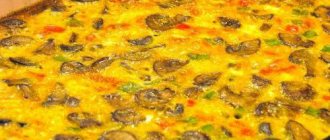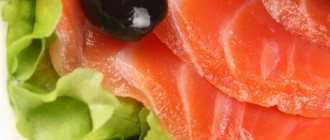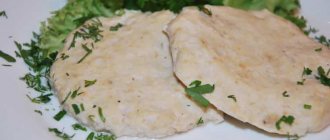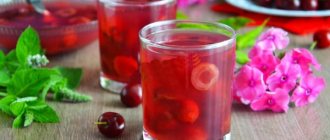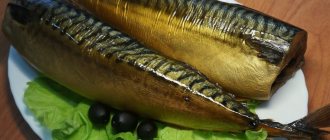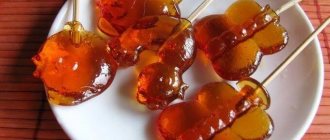Wine has a reputation for being a good drink and, when done well, promotes heart health. While this is true, wine is not the only drink that can benefit the body (and the soul and heart). Of course, the key is moderation so as not to cause harm to your health. It is not surprising that cognac is an alcoholic drink that is called a “healing drink” or “water of life.”
Different alcohols provide different health benefits, and cognac is one of the strongest. It contains many beneficial substances - antioxidants that help prevent cell damage from free radicals. Damaged cells can lead to clogged arteries, heart disease, cancer and blindness. A bedtime glass with an ice cube can help reduce free radicals while being really tasty. But if you are worried about your figure and how many calories there are in cognac, let’s look at this issue in more detail.
How many calories are in cognac
Wine has a reputation for being a good drink and, when done well, promotes heart health.
While this is true, wine is not the only drink that can benefit the body (and the soul and heart). Of course, the key is moderation so as not to cause harm to your health. It is not surprising that cognac is an alcoholic drink that is called a “healing drink” or “water of life.” Different alcohols provide different health benefits, and cognac is one of the strongest. It contains many beneficial substances - antioxidants that help prevent cell damage from free radicals. Damaged cells can lead to clogged arteries, heart disease, cancer and blindness. A bedtime glass with an ice cube can help reduce free radicals while being really tasty. But if you are worried about your figure and how many calories there are in cognac, let’s look at this issue in more detail.
Strong alcohol
For any alcohol with a degree above 38, the normal dose is no more than 50 grams per day. In such quantities, strong, high-quality alcohol will be beneficial for the body. These alcoholic drinks are high in calories, each containing more than 200 kcal. per 100 gr.
Rum
A strong alcoholic drink made by fermenting and then distilling cane syrup or molasses. It is then usually aged in oak barrels. It matures faster than cognac and whiskey. More often, rum is the basis for many alcoholic cocktails, and is not consumed in its pure form. It is also used for making desserts, for example, fruits are soaked in it, and is often used with coffee and chocolate. In addition to molasses or cane syrup, yeast and flavoring agents are added when making rum. Depending on them, the chemical composition of the product will change slightly. Rum contains small amounts of minerals, for example:
- maltose;
- potassium;
- glucose;
- phosphorus;
- dextrin.
Available in small quantities:
- copper;
- sodium;
- manganese;
- iron;
- zinc;
- B vitamins.
Rum is a fairly high-calorie drink (220 kcal per 100 g), so it goes very poorly with weight loss. It has a good effect on digestion, compresses help treat radiculitis and rheumatism. Rum also has antibacterial properties, relieves nervous tension, treats bronchitis and sore throat (it is recommended to mix with honey and lemon).
Gin
The main feature of this drink is hidden in the recipe. An essential component is juniper, the beneficial properties of which have been known to mankind for a long time. Some gin producers experiment and add individual aromatic components and dilute them with spices:
- licorice;
- cinnamon;
- cardamom;
- anise.
High-quality gin contains the following beneficial elements:
- zinc;
- phosphorus;
- copper;
- sodium;
- potassium;
- manganese;
- iron.
Gin is the same high-calorie drink as rum (220 kcal per 100 g). Don't overuse it if you want to lose weight.
Tequila
Strong Mexican drink. Made from the heart of the agave plant. Contains a lot of inulin. Reasonable consumption improves digestion, reduces the risk of heartburn, heaviness and other uncomfortable conditions. Polymers of fructose molecules that tequila contains increase the number of lactobacilli and bifidobacteria in the body. Calorie content: 210 kcal.
Whiskey
This high-quality alcoholic drink has many benefits:
- Improves brain function. Provides prevention of Alzheimer's disease.
- Reduces stress and risk of stroke.
- Great for diabetics as it contains no carbohydrates (sugar).
- Due to its low calorie content, it is the optimal choice for a person who is on a diet.
- Improves heart function, clears blood clots.
It should be noted that the above applies to high-quality whiskey, aged for many years and only when consumed in reasonable doses.
Cognac
- dilates blood vessels and lowers blood pressure;
- helps with attacks of angina, toothache and headache.
Recommended dose: no more than 30 grams per day. The benefits of cognac directly depend on its quality.
Liqueurs
A drink with a sweet aroma. Infused with spices, fruits, herbs and berries. It is distinguished by complex cooking technology, which each manufacturer strives to keep secret. Regardless of the degree of alcohol, which varies among liqueurs, only natural drinks without dyes and flavors have medicinal properties:
- reduce cholesterol levels;
- promote hematopoiesis;
- help treat colds;
- improve the functioning of the cardiovascular system.
Such drinks contain a lot of sugar, that is, a large amount of carbohydrates. Alcohol calories are burned quickly, and carbohydrate calories are stored in reserve on the hips and waist. Cocktails are especially dangerous in this regard, and not alcohol in its pure form. Their calorie content is more than 300 kcal per 100 g.
Composition and beneficial properties of cognac|
Cognac is an alcoholic drink defined by the Dutch word “brandewijn”, meaning “burnt wine”. The name is appropriate, as in most forms it is made at high temperature, applying heat, initially from an open fire, to the wine, which allows it to displace and concentrate the alcohol naturally present in it. Cognac is made by further distilling wine to increase its alcohol content, containing around 30-60% by volume. Although cognac is derived from wine, it is aged in oak barrels, which increases the alcohol content and also gives it a unique color. Although this spirit is usually made from wine or other fermented fruit juices, it can be distilled from any sugar-containing liquid.
Cognac is similar to wine in that it is also made from grapes, has the same properties, and is therefore rich in polyphenols, which are found in grapes. Cognac is also great for relieving headaches as it dilates blood vessels. Cognac is even used in home remedies for colds and flu in winter. The eastern quarters have a drink called Gogol Mogol, one of the cognac-based hot cocktails made from milk, butter, raw egg yolk and honey. In 1918, the Germans created a mixture against the Spanish flu, which consisted of fresh garlic and cognac. You may not be dealing with the Spanish flu anytime soon, but cognac is the main ingredient in a recipe for a bad sore throat - just mix a little cognac and cumin.
Alcoholic drinks such as cognac have a particularly high calorie content: one “shot” contains 100 calories; it is also often mixed with another drink containing even more calories due to added sugar. Likewise, fruit flavored brandy has additional calories due to added sugar.
Cognac is similar to wine in that it is also made from grapes and is therefore rich in the polyphenols it contains. Great for relieving headaches by dilating blood vessels, and is even used in home remedies for colds and flu in the winter. There is the concept of “Gogol Mogol” - a hot cognac drink made from milk, butter, raw egg yolk and honey (a composition after which there is no point in wondering how many calories are in cognac). In 1918, the Germans created a mixture against the Spanish flu, which consisted of fresh garlic and cognac. Although we are not threatened with the Spanish flu, the value of the drink makes it the main ingredient in a recipe for a severe sore throat - all you need is a little cognac and cumin.
Has the following beneficial properties:
- relieves breathing problems;
- boosts the immune system;
- improves cardiovascular health;
- helps in the treatment of cancer;
- has anti-aging properties;
- helps with weight management;
- helps induce sleep.
Calorie content in cocktails and mixtures
Not everyone prefers to drink brandy neat and often mixes it with other drinks or makes cocktails. The calorie content of cocktails depends not only on the number of calories in brandy, but also on other components. We offer you a table of calorie content of the most popular brandy-based cocktails that will help you make the right choice when you are on a diet or just watching your figure.
| Cocktail name | Compound | Calorie content of 1 serving (kcal) |
| Cognac and cola | Greenwich, cola. | 74,8 |
| Sazerac | Hennessy, absinthe, bourbon, angostura, water, sugar, lemon zest, ice. | 234,53 |
| Sidecar | "Klinkov", cognac liqueur, sugar syrup, lemon juice, water, sugar, ice. | 204,65 |
| ABC | Hennessy, Irish Cream liqueur, Amaretto liqueur. | 165 |
| Tom and Jerry | Metaxa, dark rum, egg yolk, milk, nutmeg, powdered sugar. | 521,35 |
| Brandy Alexander | "Ararat", cocoa liqueur, cream, nutmeg, ice. | 273,45 |
| Brandy sour | “Shustov”, sugar syrup, lemon juice, egg white, lemon, cocktail cherry, ice. | 177,85 |
| Stinger | “Noah”, mint liqueur, ice. | 212,75 |
| Champagne cocktail | Metaxa, prosecco, angostura, cane sugar. | 178,66 |
| Brandy Crusta | Hennessy, sugar, ice, triple sec, lemon zest, maraschino liqueur, angostura, orange bitters, simple syrup, lemon juice. | 295,2 |
Compared to other alcoholic drinks, cognac is quite high in calories , but moderate consumption of this drink can have a beneficial effect on the entire body. So, with small doses (no more than 1-2 teaspoons) you can improve digestion processes, concentration of memory and hearing. For those who love cocktails, it is better to choose formulations with a lot of ice and a non-alcoholic base (cola, juice), which will make the drink less strong and high in calories.
Share your preferences in the comments and tell us whether you consider the calorie content of alcoholic beverages in your diet.
Calorie content of cognac in a teaspoon, a tablespoon and 1 glass
One teaspoon of cognac contains:
- ~ 12 kcal;
- proteins and fats - 0 g;
- carbohydrates - less than 0.1 grams.
One tablespoon includes:
- ~ 43 kcal;
- 0 g protein and fat;
- 0.27 g carbohydrates.
A glass of cognac (250 grams) contains:
- 597 kcal;
- 0 g protein and fat
- 3.75 g carbohydrates.
Potassium, of which there is 0.27 mg per tablespoon, is not the only vital microelement contained in cognac: calcium, sodium and, as mentioned earlier, various antioxidants are substances beneficial to the body when consumed in moderation; less than 2 grams - this is how many carbohydrates are in cognac per 100 grams.
How to reduce the calorie content of alcoholic drinks
There are several ways to reduce the number of calories that come into your body from alcohol.
Drink alcohol correctly.
There are a number of rules that should be followed when consuming this or that product. This includes the dishes in which it is served and the quantity per serving; the appetizer is regulated. For example, cognac is usually consumed after meals. The drink is poured into a special glass - 30 ml. Snack on fruit or chocolate. And so on for every drink.
- Reduce the portion - for example, buy 0.3 liters of beer, rather than 0.5 or 1 liter. Avoid heavy snacks like nuts or crackers.
- Wine can be drunk diluted with water. Choose unfortified dry wines. Fortified wines are not diluted with water, but they are drunk like cognac - little by little and without snacks.
Well, the best way not to gain weight from alcohol is not to drink it at all. The body will only be grateful to you - you will improve your health and lose weight.
Cognac is a drink that is obtained from certain varieties of grapes. After aging in oak barrels, it receives special properties: toning and relaxation. In order for this product to provide only benefits, it is necessary to strictly follow the rules for using cognac and eliminate the possibility of overdose with this alcoholic drink. In this case, cognac will only provide benefits to the body.
Calorie content of vodka
The abundance of alcohol available today is taken for granted. But have you ever thought about the difference between cognac and vodka? After all, why do some people choose a bottle of vodka as their only option while others gravitate towards cognac?
The choice is based on taste preferences or life experience, however, if we consider both alcoholic drinks from the point of view of their effect on the figure, and determine which is higher in calories - vodka or cognac, an interesting fact will be revealed:
- calorie content of vodka 40% alcohol - 235 kcal;
- calorie content of cognac 40% alcohol - 240 kcal.
Calorie content of cognac of various brands
By law, any manufacturer is required to indicate calorie content on product packaging. This is recorded in GOSTs. The calorie content of alcohol is determined by the amount of its nutritional components.
Today there are several types of drink, defined by the National Cognac Bureau:
- “very special” (3 stars) - a drink aged for 2 years;
- “very excellent” - storage for at least four years;
- “extra old” - aged 6 years;
- “out of age” - outside the age scale.
The following is the number of calories of different brands of cognac per 100 ml:
- “Noah” - 234 kcal;
- “Ararat” - 239 kcal;
- “Princess Anna” - 228 kcal;
- “Jean Jacques” - 241 kcal;
- "Oquin" - 240 kcal.
